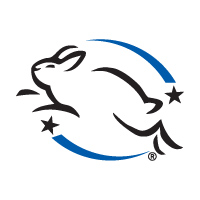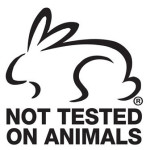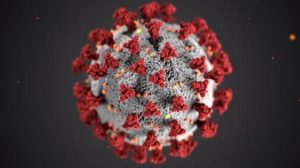Every 60 seconds, an animal gets abused.
When we think of animal abuse, what are the first things that come to mind? I would be willing to bet that most people instantly think of examples such as the following:
- Physical abuse against house pets (specifically dogs and cats)
- Dogs being left outside in the cold
- Dogs being left in the car on a hot summer day
- Neglect of proper care of house pets (feeding, bathing, grooming, walking, vet visits etc)
These are the most common examples of animal abuse that we are aware of and think of when the topic of animal abuse comes up. However, there are so many forms of animal abuse that some of us don’t even consider or that don’t even come to mind.
Why is it, that when we think about animal abuse, that we tend to only think about our house pets, and usually more specifically just our dogs and cats? What about small pets like hamsters, guinea pigs, rats, mice, snakes, birds, hedgehogs, fish, etc? What about the even bigger picture of the abuse of animals in the wild, or the abuse of animals in the circus industry? The abuse of animals in ways that we generally don’t even think of or maybe don’t even know about? I think that we tend to think more about dogs and cats because these are two species of animals that are a part of our daily lives and interactions, and this makes sense.
In this post, I am going to address the very harsh reality and the very difficult topic of animal abuse, to try and spread more awareness about what is going on around us that we may not see as animal abuse, but when we look closely, we see that it is, in fact, abuse. My goal of this post is to spread awareness, and maybe help some of you out there to think twice before participating in certain activities that aren’t in the best interest of the animals that we all say that we love.
Let’s start with one of the biggest ones, which will be my main focus of this post as it addresses many of the problems of abuse of wild animals.
The Zoo

The Zoo is a great place to spend a day with your kids, your friends, your sweetheart, and/or your family. We get to see animals up close that we may otherwise never see in person in our lifetimes. We can sometimes pet animals, feed them, and go to animal shows at the Zoo and watch these animals perform seemingly incredible acts. Sounds great, right? But what is happening behind the scenes?
Most of us don’t even think twice about the welfare and state of these animals. We go to see them, we leave the Zoo, and go about our lives almost completely putting it out of our minds. We don’t think about how small the enclosures for these wild animals are. We don’t think about the fact that some of these animals are taught tricks for our amusement. What do they go through to learn those tricks? (I will get more into the trick aspect of things in a separate section of this post).
There is an organization in the US called AZA (Association of Zoos and Aquariums), which requires its members to go through an accreditation process. They are an organization that has very high standards of animal care, science and conservation. There are around 2,400 “animal exhibitors” in the US alone, and only 212 are members of the AZA. That’s it. If you go somewhere to see animals and they have an AZA accreditation, you can be nearly certain that the animals are being treated well, cared for properly, and they are doing everything according to the high standards of this organization. But with these small numbers of only 212 out of 2,400 being members of this organization, it’s very likely that your local Zoo is not accredited by them.
There is another organization called WAZA. This is the World Association of Zoos and Aquariums. Sounds similar, right? As the name might suggest, this is a worldwide organization that also says they promote the welfare and conservation of animals. However, here is where we see our problem: there is no accreditation process to become a member of this organization. Becoming a WAZA member requires filling out an application, submitting letters of support from two other WAZA members, and paying a fee. Zoos, for example, must pay 2,500 euros, or nearly $2,800. If you do that, you’re a member. There is no process or real inspection before becoming a member that actually checks on the welfare of the animals in that facility.
If you go to a Zoo where they allow any physical contact with the animals, it is most likely not an AZA accredited Zoo. Why? Such contact can be damaging for animals’ mental and physical well-being and often requires training methods such as premature separation from mothers, physical restraint, and pain- and fear-based conditioning; according to reports from WAP (World Animal Protection).
World Animal Protection’s report describes venues that offered encounters where visitors can stroke, kiss, and cuddle with big cats, shows where humans “surf” on the backs of dolphins, and performances in which elephants paint pictures with their trunks. These experiences are extremely stressful for animals. “Some facilities just kind of bill this as wildlife tourism, and it’s really nothing of the sort,” she says. “Wildlife tourism is the kind of thing where you go and you see wildlife in their own environs, in their own milieu—not where you go and you get to take your picture with the tiger, or you get to interact with a monkey that’s dressed up in street clothes, or kissing an orangutan, or something like that. That is not wildlife tourism; that’s exploitation.”
“Getting [animals] to the point where they’re completely safe around people involves a whole level of different training and breaking of the animal’s spirit,” D’Cruze says. “There’s a difference between a domesticated species like a cat or a dog that’s been changed over thousands of years biologically and behaviorally to be around people, and an animal that’s been broken to be tame.”
These are all really important things to remember. There are many Zoos that are now working really hard to try and take in animals that can no longer survive in the wild, or that have been saved from a Circus company, and they try to reintegrate them into the wild. There are many Zoos which only take in animals that can no longer survive in the wild.
Zoos play a major role in the conservation of animal species, but there is a difference between conservation/respecting the wild life, and exploiting them for our entertainment. This is something we all need to be more aware of if we continue to support organizations such as Zoos and Aquariums.
Other Forms of Abuse:

Animal Rides
Whether it’s an Elephant ride, a Camel ride, swimming with Dolphins, Pony rides at your local State Fair or Zoo where you just walk around in a little circle…that’s animal abuse. As stated above, these situations cause extreme stress for these animals and most of the time, the animals have to be trained in order to be comfortable with humans being so close to them, touching them, and riding them. These animals are trained to listen to commands, and the way this is most often done, is by the mistreatment and cruelty towards them. A dolphin in the wild would never let you come close enough to hold onto its fin and ride the waves with it. That is taught. Elephants and camels in the wild would never just lay down, allow you climb up on their backs and, when you’re ready, they get up and walk with you. This is taught. So think twice the next time you are traveling to a dessert, to Thailand, to Africa, or even just at your local Zoo or Petting Zoo. Don’t support this abuse, the animals are scared and this is not natural for them. This is exploitation for our enjoyment.

Laboratory Experiments
So many products that we use every single day, are first tested on animals. Toothpaste, Mouthwash, Makeup, even household cleaners (to make sure they don’t burn our skin), just to name a very select few. Experiments on animals is a form of animal cruelty that is happening all over the world. Over 100 million animals, including dogs, mice, rats, cats, monkeys, rabbits, birds, among others are killed in laboratories for drug, chemical, food, and cosmetics testing every year.

Genetic Manipulation
Manipulation of animal genome through biotechnology is done to animals to increase their productivity, fast-forward their growth, etc. This has increased significantly in recent years and it poorly impacts the overall health of animals. Approximately 90% of the broiler chickens (chicken bred specifically for meat production) have trouble walking due to their genetic manipulation. Almost 100% of Turkeys bred for meat consumption in the US are products of artificial insemination because we have bred them to grow so large, that they can no longer physically have sex.

Puppy Mills
A mass breeding facility that produces puppies for sale, puppy mills are one of the largest commercial dog breeding operations in the world where the emphasis is more on profit than the health of dogs. In these mills, many puppies are plagued with illnesses like heart or kidney disease as a result of the poor-conditions in which they are kept in. Female dogs are bred with little to no recovery time between their litters. When female dogs reach the stage when they are unable to reproduce litter, they are often killed. It is estimated that in America every year approximately 2.11 million puppies (originating from puppy mills) are sold while approximately 3 million are killed in shelters due to a scarcity of adoptive homes.

Killing of Racing Dogs and Horses
Every year, thousands of healthy dogs (specifically Greyhounds) and racing horses are killed due to the fact that they no longer hold the potential to race at speeds that will give them a win in the races.

Neglect
Not providing an animal basic care such as food, water, vet check ups, etc, is a form of neglect and, in turn, abuse. When we take in an animal, it becomes our responsibility to care for that animal properly. The animals cannot go out and do all those things for themselves. They rely on us to care for them and if we cannot provide that for them, then we should not have them in the first place. Before you bring an animal into your home, be sure that you are in a place to take on all of the responsibility coming along with it. That you can afford the costs of food, the costs of check ups at the vet, the potentially unexpected costs if your pet becomes ill and needs professional care, the time to be able to spend time with your pet and not leave it alone all the time. This is extremely important while neglect and improper preparation before getting a pet are often the main reasons that pets end up in shelters.
In Conclusion...
While there are many more forms of animal abuse, these are the ones that I really wanted to touch on, especially with the times now. The thing that triggered me to write this post was a video I saw on Instagram. Someone posted a video on some sort of funny meme account. It was a video of two very large people, sitting on a camel’s back in preparation for a camel ride. When the camel was told to stand up, it did as it was told, even though they were sitting improperly, causing the camel to fall forward, the heavy set people to also fall forward, putting all that weight on the camel’s neck and upper part of it’s back. This was posted as a funny video. The comments were people laughing and making fun of the situation. I commented about the poor camel and that camel rides are a form of abuse, and of course, only got comments in return that were extremely naive. One person even said that the camel is not being abused because you can clearly see that in the video. It stood up on it’s own and no one was hitting it in order to make it follow the order. What we see in a video is not always the truth. Just because you don’t see physical abuse does not mean that it isn’t happening behind the scenes.
How Do I Know If Products I buy are tested on animals?
The Leaping Bunny

Cruelty Free Bunny
The company and their ingredient suppliers do not conduct, commission, or pay for any tests on animals for ingredients, formulations, or finished products. Requires companies to complete a short questionnaire and sign a statement of assurance. Verified by PETA
Not Tested On Animals
None of its products and ingredients have ever been tested on animals by it, by anyone on its behalf, by its suppliers or anyone on their behalf and must not contain any ingredients derived specifically from killing an animal or provided as a by-product from killed animals.
Verified by Choose Cruelty Free (CCF)
CCF also will not accredit companies unless all parent and subsidiaries are also accredite
I hope that this article has brought you some new perspectives and new information and I appreciate all of you that took the time to read it. I know it was a longer one than usual, but I think the message is really important. We aren’t always aware of what is really going on and I think it is very important to be aware of these things.
Stand up for the rights of animals. We are animals as well. We are no different than they are.
Please leave us a comment below and share with friends and family.
You can find us on instagram @sproutedconsciousness.
Together, we can make the world a better place for our species and other animal species.
Sources:
https://www.trustedclothes.com/blog/2016/06/17/vegan-cruelty-free-logo-guide/
https://www.youthkiawaaz.com/2015/10/saving-animals-from-cruelty/
https://www.nationalgeographic.com/animals/2003/11/news-zoo-commitment-conservation-critic/
Cruelty Free Skincare and More – The Dermatology Review (thedermreview.com)






